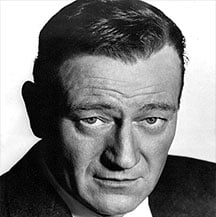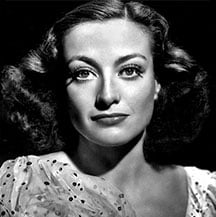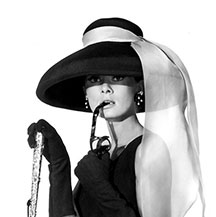A night at the movies has become the standard for first dates and family nights all over the country. Movies allow us to escape our problems and get lost in a world of imagination. Movies can also help to memorialize an important person or event so we never forget the past. Our history is chronicled by the movies made by talented filmmakers, and those movies stand as time capsules for future generations to enjoy. Movies have been around for a very long time, and it can be interesting to look back on their history and see how a night at the movies was originally created.
Films of the 1800s
The first single-lens camera that got movies started was patented in 1888 by a French inventor named Louis Le Prince. He had experimented with cameras that had several lenses before he finally hit upon his revolutionary idea.
The first moving picture show was a homemade movie done by Max and Emil Skladanowsky. The brothers were the first to make movies that they showed to paying audiences throughout Europe.

The next famous brother team in the movie business were Auguste and Louis Lumiere. Their movie “Workers Leaving The Lumiere Factory In Lyon” was a hit in 1895. It was 46 seconds long, and it captivated audiences all over Europe. The Lumiere brothers were also responsible for the legendary 1896 film “Arrival Of A Train At La Ciotat Station,” which literally had people running from the theater because they thought the train was going to burst through the screen. In 1896, “The Haunted Castle” was one of the first films with any kind of production. It is three minutes long and features props as well as paid actors.
Early Movies
Silent movies ruled the early years of cinema because no one had developed a way to include a sound recording that would synchronize with the movies. In 1925, “The Phantom of the Opera” horrified audiences all over the world. The 1915 American film “Birth Of A Nation” offended and fascinated people for years. The first incarnation of Dracula was brought to the big screen in 1922 with the release of “Nosferatu.”
But the most significant early movie is generally regarded to be the 1927 German masterpiece “Metropolis.” It took several years to film, but its use of state-of-the-art special effects made it a ground-breaking film.
The Film Industry
 The very first movie studio built in the United States was Thomas Edison’s Black Maria Studios in New Jersey. Prior to Edison’s studio, movies were filmed in theaters and often documented live performances. Edison’s early electric lights were innovative, but they were not powerful enough to create quality films.
The very first movie studio built in the United States was Thomas Edison’s Black Maria Studios in New Jersey. Prior to Edison’s studio, movies were filmed in theaters and often documented live performances. Edison’s early electric lights were innovative, but they were not powerful enough to create quality films.
The abundance of natural sunlight is why movie studios decided to start setting up shop in California. By the mid-1920s, RKO Pictures, Warner Brothers, Paramount Pictures, 20th Century Fox, and Metro-Goldwyn-Mayer had become the most dominant studios in the world. These studios went out and built movie houses to show their films to the public and cornered the movie industry. Smaller studios such as Universal Pictures, Columbia Pictures, and United Artists sprang up shortly after the “Big Five” and struggled initially to survive.
The Great Depression should have been a disaster for the movie studios, but it actually was one of the most profitable times in the industry’s history. The movie “King Kong” was released in 1933 and went on to become a huge financial success. People wanted a way to forget about their problems, and movies offered that release.
During times of war, movies played significant roles for all sides. During World War I, the British government financed such propaganda movies as “The Battle of the Somme” to drum up support for the war effort. The American government also used movies to sway the public into backing the war by releasing movies such as “Pershing’s Crusaders” and “America’s Answer.”
The Third Reich in Germany used movies after World War I to promote their agenda of imperialism and hate. The movies were extremely popular in Germany and extremely effective. American movie makers have immortalized thousands of stories from World War II in films that were made during and after the war. It was even rumored that some Hollywood studios were spying for the enemy by filming movies during World War II in American shipyards and on American army bases.
The Sound Era
 The first sound movie was actually presented to a shocked audience in Paris in 1900. But the technology required to make and show sound films was too expensive for theaters to invest in. D.W. Griffith released a short called “Dream Street” in 1921 that had some street noises and conversations but no real plot.
The first sound movie was actually presented to a shocked audience in Paris in 1900. But the technology required to make and show sound films was too expensive for theaters to invest in. D.W. Griffith released a short called “Dream Street” in 1921 that had some street noises and conversations but no real plot.
The first commercially successful sound movie was “The Jazz Singer,” released in 1927. Some silent movie stars, such as Charlie Chaplin, fought the popularity of the “talkies” because they felt that movies should be seen and not heard.
Thomas Edison was an early pioneer in sound movies, and he developed the first sound system, known as Kinetoscope, in 1895. But since it involved a separate sound cylinder that had to play along with the movie, it didn’t always work. The ability to put sound on the actual movie film was patented by American Lee De Forest in 1919. Along with the help of inventor Theodore Case, De Forest continued to perfect his sound-on-film system until it was heard in all its glory in 1927.
Post-Classical Cinema
The “golden age of cinema” started in the early 1950s and ran until the mid-1980s. It is often referred to as the post-classical era of cinema, and it was a time when some of the most iconic movies of all time were made. The creation of the drive-in movie theater in 1933 had found new life after the war and helped to aid in the explosion of the popularity of movies.




In the late 1970s, many observers said that the introduction of the VHS video recorder would cause the end of the American movie theater. But while movie theaters suffered financially in the late 1980s and early 1990s, they made a comeback in the late 1990s and have been growing ever since.
- This Day In History: First Drive-In Movie Theater Opens
- The History Of The Drive-In Movie Theater
- The Screwball And Its Audience
- The 10 Best Films Of the 1890’s
- Nazi Propaganda
- Through Japanese Eyes: WWII In Japanese Cinema
- Charlie Chaplin
- The Golden Age Of Hollywood
- VHS And Home Video – The Story Of Its Rise And Fall
- The Biography Of Thomas Edison
- The Lumiere Brothers
- Chronology of Film History
Home Theater Seating
- Theater Seating Denver
- Octane Recliner
- Movie Room Leather Seat
- Theater Room Seating
- Theater Seats Black
- Southern Motion
- Recliner Specials
- Modern Chairs for Sale
- VIP Cinema Seating
- Full Grain vs Top Grain
- Theater Seat Store Blog
- Theater Seat Store Reviews
- 4 Seater Leather Recliner
- Movie Night Sectional
- Colored Theatre Chair
- Movie Theater Sofa For Sale
Decor & Accessories
- Theater Room Carpet
- Theater Seating Denver
- Popcorn Machines for Sale
- Movie Theater Sign
- Theatre Room Seats
- Theatre Design
- Home Theater Sound Panels
- Movie Theater Lights
- Best Buy Magnolia
- Theater Decorating
- Classy Recliners
- Media Room Carpet Ideas
- Recliner Chair With Tray
- Dynamo Power Recliner
- Led Couch Sectional
Top Pages
- Theater Chair
- Power Recliner with Cup Holder
- Chairs for Church for Sale
- Home Theater Loveseat
- Home Theater Couch
- Recliners for Tall Person
- Entertainment Room
- Best Buy Theater Seating
- Electric Chair Movie
- Media Couch
- Home Theater Seating Leather
- Leather Chaise Sectional
- High Back Recliners Leather
- Faux Leather Reclining Theater Chair
- High Quality Leather Sectional

